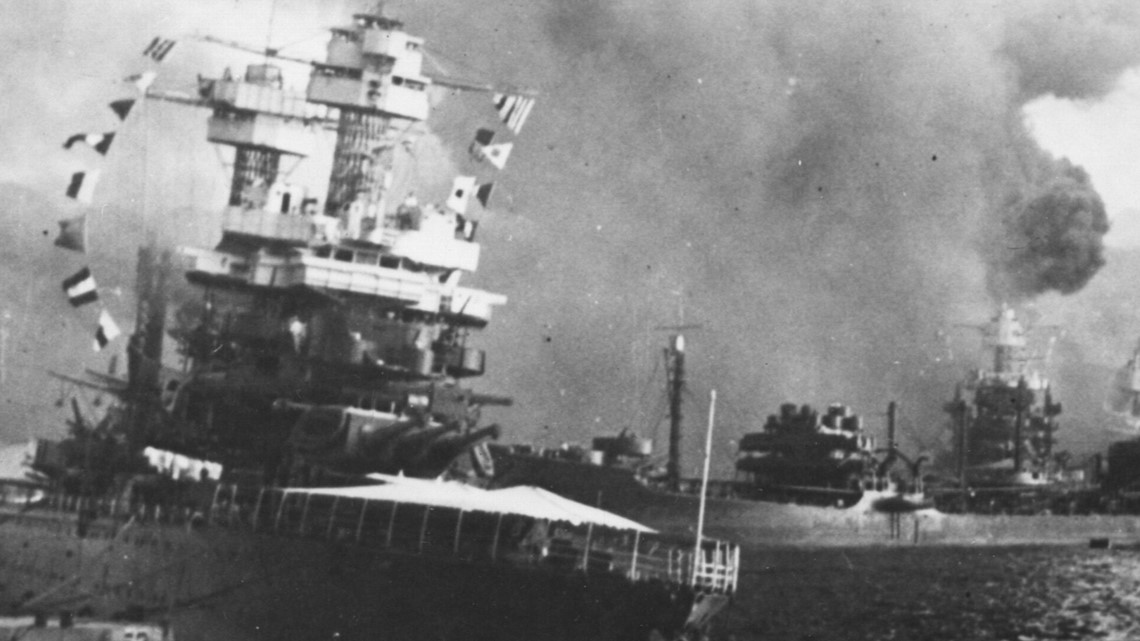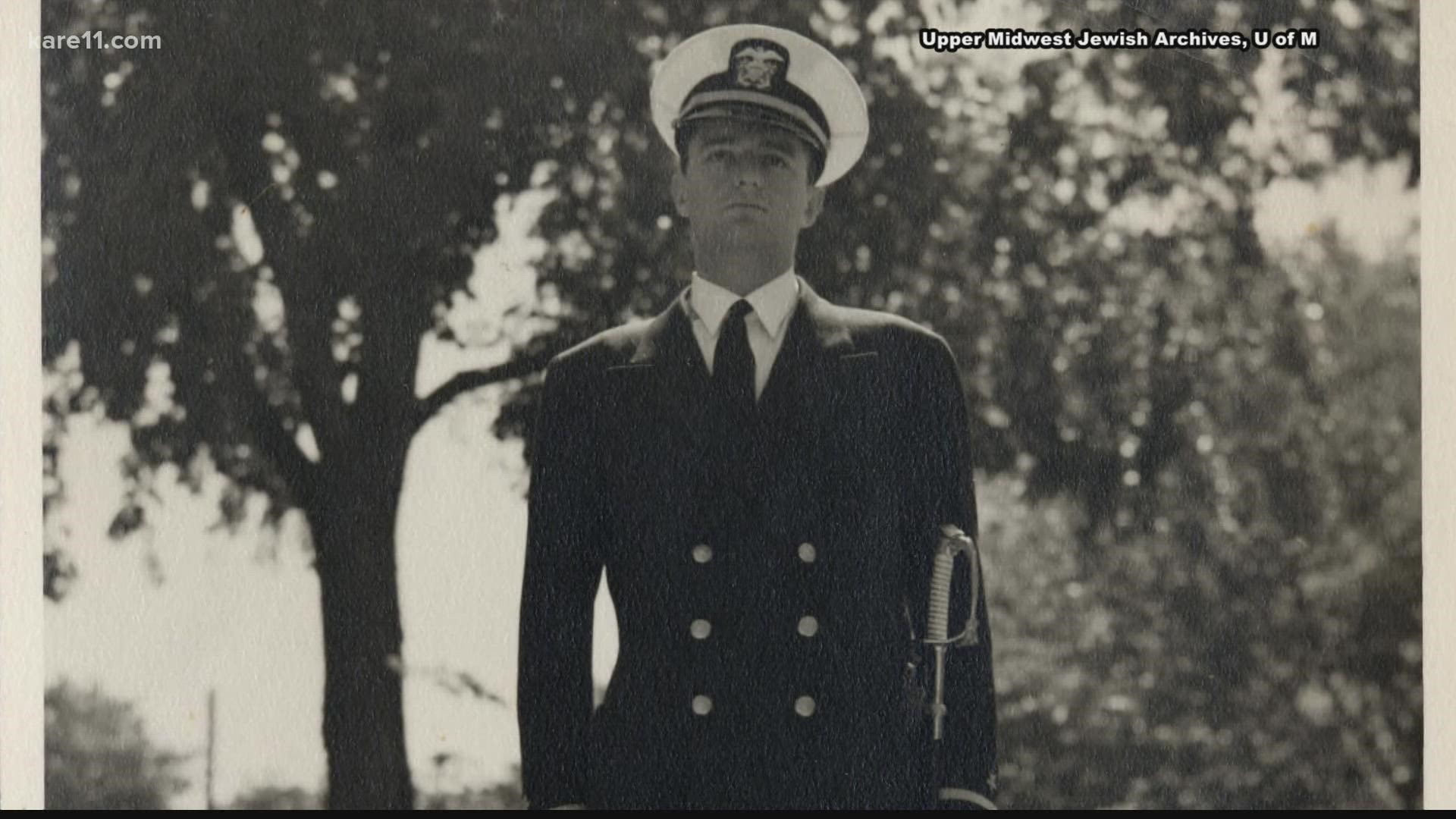MINNEAPOLIS — David and Caroline Jeffery froze in their tracks on the afternoon of Dec. 7, 1941, when news of the early morning attack on Pearl Harbor reached their home on Douglas Avenue in South Minneapolis.
They knew their son, 23-year-old Ira Weil Jeffery, was aboard the USS California at the naval base in Hawaii, but they did not know whether he had lived or died in the bombings. Three excruciating days passed, and still they had received no updates.
Ira, a recent graduate from the University of Minnesota, told his parents in a letter just one week earlier that he felt safe, happy and fulfilled in his work at Pearl Harbor. In turn, they had just mailed him a holiday care package so that he could celebrate Hanukkah from a distance.
Then, on the evening of Dec. 11, 1941, the fateful telegram arrived at the Jeffery household on Douglas Avenue.
"War struck directly at a Minneapolis home today," the Minneapolis Star reported on the front page the next day, "leaving the parents stunned and almost unable to believe that their only child had been the first reported war casualty from Minneapolis."


In Minnesota, the public could now put a name and face to the disaster at far-away Pearl Harbor, as the nation prepared to wade into World War II. Soon enough, the federal government would identify other Minnesota sailors on the casualty list, leaving more families devastated back home in the Upper Midwest.
But Ira Jeffery would be forever known to history, as the first deceased Twin Cities sailor identified in Japan's surprise attack on Pearl Harbor. He was also among the first Jewish military members to lose his life in World War II, a particularly harrowing fact for the tight-knit Minneapolis Jewish community and Jeffery's synagogue, Temple Israel.
"The first always has a little bit of notoriety, the first of anything," said Joe Weil, whose father was Ira's first cousin. "It's not the kind of notoriety that a family wants to have."
JOINING THE NAVY
Ira Jeffery did not have any siblings, nor did he have any children at the time of his death, so there are not many surviving relatives with direct knowledge of his involvement at Pearl Harbor.
Joe Weil, however, is one of the few. His father often spoke about how much he idolized his older cousin Ira, who set an example for the rest of the family.
"He was the oldest of four or five cousins," Weil said. "When Ira went into the Navy, he was the older cousin that everyone looked up to — and all the sudden, he was gone."
After graduating from University High School and the University of Minnesota, Ira enlisted in the Navy even before the U.S. implemented a peacetime draft measure in the fall of 1940. War was already raging in Europe, following Hitler's invasion of Poland in 1939, and Ira wanted to help defend his country in the event the U.S. got involved.


"He felt that when the time came," his father would later write in a letter to the Minneapolis Tribune, "he wanted to be experienced and not enter the armed forces without training."
Ira arrived at Pearl Harbor during the summer of 1941, spending many uneventful months on the naval base with the beautiful Hawaiian backdrop.
Then came Dec. 7, 1941.
"You never think it's going to happen to your family," Weil said, recalling the many stories his father told over the years. "From everything I've heard and read, it was a real gut-punch, to both the Jewish community and general community."
TEMPLE ISRAEL ROOTS
The loss was felt deeply at Temple Israel, where Ira's grandparents had been founding members. Ira was also a junior congregation president at the South Minneapolis synagogue.
"Everybody was in such shock and horror," Temple Israel Senior Rabbi Marcia Zimmerman said, citing her conversations with past rabbis at the congregation. "The story is just told over and over and over again, the tragedy and shock of his parents when they got the telegram. This entire congregation mourned him for so many reasons."
Ira's name had always hung on the walls of Temple Israel, but more recently, the synagogue added a larger memorial with several photographs and biographical information. Located just around the corner from the sanctuary, Rabbi Zimmerman walks by it every day, multiple times.


The shrine to Ira took on greater meaning this Tuesday, Dec. 7, 2021, the 80th anniversary of Pearl Harbor.
"I believe our history lives in the walls and in the carpet," Rabbi Zimmerman said. "And, his legacy continues to be a fundamental part of this congregation."
Ira's story simply has not faded.
"So many times, it takes one story to really drive home the power of what that loss is. It's that one story — that one person — that touches your heart, that allows you to connect with those larger numbers," Rabbi Zimmerman said. "And I think that Ira Weil Jeffery was that one person."
IRA'S LEGACY
After his death at Pearl Harbor, Navy Secretary Frank Knox recognized Ira Weil Jeffery for his "bravery in action," noting that he had "formed a detail and handed ammunition to the anti-aircraft guns" after Japanese bombers encircled the USS California.
A year later, the Navy also commissioned a new destroyer in his name, known as the USS Ira Jeffery. Even the famous Ed Sullivan memorialized Ira Jeffery in his New York Daily News column, hoping to share the young Minnesotan's story with a nationwide audience.
Perhaps even more importantly, though, Ira inspired his own family in ways that cannot be measured.
Joe Weil, for example, said that his father later joined the Navy in large part because his favorite older cousin had done so.
"It's hard to believe it's 80 years. He sounded like a really cool guy," Weil said. "It's unfortunate that he did not have more of an opportunity in his life to make even more of a difference than he already made."
On this 80th anniversary of Pearl Harbor, the Minnesota Military and Veterans Museum will be hosting a virtual Zoom remembrance at 7 p.m. on Tuesday. For information on registration and viewing, click this link.

